The first 11 heifers and two bullocks were slaughtered from grass on the Thrive demonstration farm on 19 August.
This is almost a month earlier than the first slaughter date last year.
Each year, there is a batch of heifers that are perhaps not the heaviest or best animals on the farm, but come fit for slaughter at lower weights.
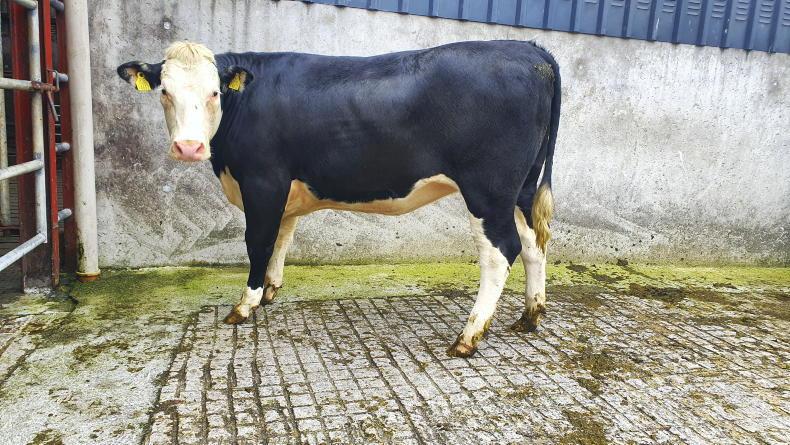
This heifer had a carcase weight of 263 and graded O+5- and came into €1,038.
The real difficulty with these animals is trying to get them into a significant carcase weight, while at the same time not going over fat in terms of carcase fat score. Looking at the data in Table 1, perhaps they should have been killed a fortnight earlier.
All the finishing cattle were weighed in late July, and from this weighing, any heifer over 470kg and any bullock over 500kg was started on meal at grass from 1 August.
The heifers were built up to 3kg/day, while the bullocks were brought up to 4kg/day of a 12% protein high-energy ration.
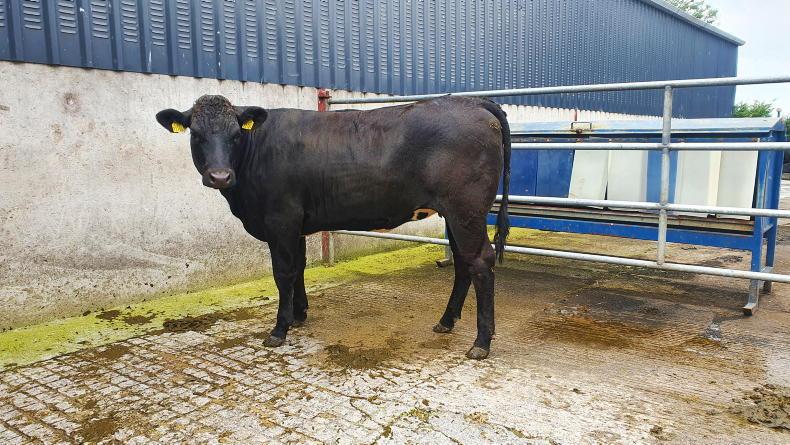
This Limousin heifer weighed 509kg, had a killout of 53.4%, carcase weight of 272kg and graded R-4=.
This meant that by slaughter, these heifers had only consumed 54kg of concentrate in the finishing phase and a lifetime concentrate total of 394kg (rearing, first grazing season, first winter and finishing phase).
Overall, the heifers averaged a 4= for fat score, higher than where we would like it to be. Due to fat score, three heifers received a price penalty.
Two heifers that graded a 4+ were back 6c/kg on the grid and the quality assurance payment reduced 8c/kg from 20c/kg to 12c/kg. For these two animals, it meant an average carcase value cut of €38.
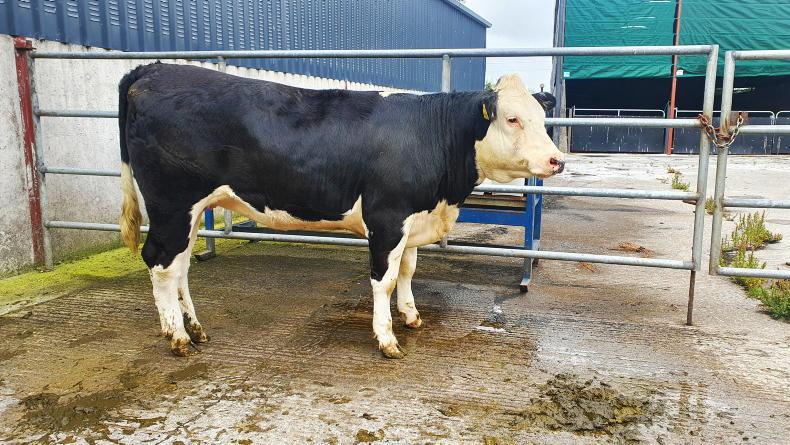
This 525kg heifer had a carcase weight of 270kg, graded R-4= and made €1,214.
The heifer that graded a 5-, however, took a 24c/kg hit for fat score on the grid and the complete quality assurance payment of 20c/kg was lost as well. This meant a carcase value reduction of €116 – a costly mistake.
It goes to show the importance of regular drafting of cattle and being willing to send even one or two cattle at a time where necessary and not waiting until there is a full load to go.
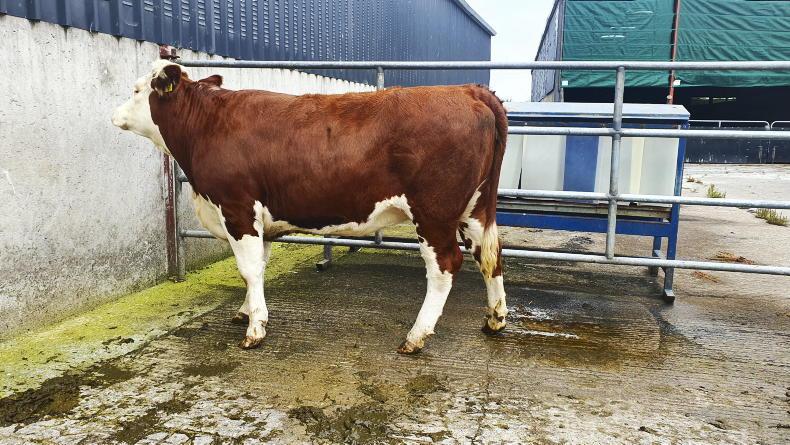
This 550kg heifer had a 52.6% killout, 289kg carcase and graded O+4+ making €1,226.
Industry problem
These heifers highlight a greater problem within the dairy-beef industry. Beef farmers are purchasing these animals as calves at a few weeks old, not knowing what their potential will be at the other end of the system. In terms of hitting key performance targets, these heifers have done it all. They are:
Slaughtered off grass.At a young slaughter age.With low lifetime concentrate input.However, if the future of the dairy-beef industry is to be based on genetics that are going over carcase specification for fat score at a 260kg carcase weight, serious questions need to be asked about the beef value of calves coming from the dairy herd. No matter what beef bull we put on these cows, their offspring are going to struggle to produce a carcase of significant weight.
Did they leave money?
Table 2 looks at the economics of the system for these 11 heifers.
Average heifer calf price in 2020 was €155 for Angus, €157 for Hereford and €206 for Limousin, giving an average price of €160 across the batch. Variable costs include milk powder, grazing costs for two seasons, silage costs and meal input costs from arrival, first grazing season, first winter and the finishing phase.
Overall, this translates to a total variable cost of €739/head. The average carcase value of the heifers came to €1,160/head, meaning they achieved a gross margin of €421/head.
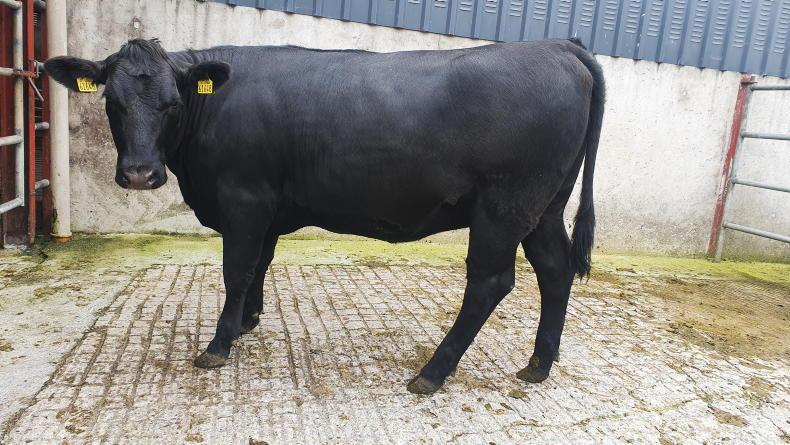
This heifer had a carcase weight of 258kg and graded O+4= making €1,144.
While this sounds good, fixed costs and labour need to be factored into the system. Typically, these could range from €250/head to €300/head, depending on the farm. This brings net margin back to between €121 to €171/head.
It is also worth mentioning that we have just experienced the best August beef price since 2013. If we were to do the same sums using last year’s beef price, the system would just about break even.
Understanding
beef price payment
Many farmers will be drafting dairy-beef cattle for the first time this year and where a live trading system in the mart may have been employed in the past, understanding the grading system in the factory can be quite daunting.

This bullock weighed 572kg, a killout of 51.9%, carcase weight of 297kg and graded O=3+.
From the outset, it is worth stating that you should always talk to your factory agent well in advance of having stock ready for slaughter. While the beef price grid is similar in most factories, there are exceptions to the rule, where some offer different payment structures and bonus payments depending on breed, weight and carcase specification.
It is also worth speaking to farmers who are producing animals similar to your own, as they will know where the best deals for that particular animal can be acquired.
The price you are paid in the factory will depend on a number of factors. Firstly, the base price is the price you will hear quoted each week, as it changes up or down depending on market factors.
However, depending on the fat score and conformation of the animal slaughtered, the actual beef price paid for your animal may deviate from this base price quite considerably.
Fat score
Fat score on the grid is scored from 1 to 5, where 1 is little or no carcase fat cover and 5 is an excessively fat animal. Each score is subdivided into three, meaning an animal could grade a 3-, 3= or 3+, increasing with the level of carcase fat on the animal.
The aim should be to draft stock with a minimum fat score of 2+ and a maximum of 3+. Where cattle are being paid on the grid, once animals hit a 4+ for fatness there is a 6c/kg penalty. Once animals hit a fat grade of 5, there is a 24c/kg cut. This is because excess carcase fat will need to be trimmed off by the factory.
Conformation
Likewise, the grid payment depends of the conformation of the animal as well. The grading system works on the EUROP scale, where E is the best-conformed animal and P is an animal with very poor conformation. Within this, each grade is also divided into three. So, an animal could grade an R-, R= or R+, increasing with better conformation.
The base price that you will hear being quoted each week will be paid on R= and R- grading cattle (midpoint of the grid). If an animal grades O+, there is a 12c/kg deduction from the base price. For each grade backwards from here, there is an additional 6c/kg price deduction.
On the other side, if an animal grades an R+ or better, there is a 6c/kg price increase on the base price for each grade up an animal makes.
Quality assurance
Whether or not your farm is Bord Bia quality assured needs to be taken into account. This will carry a 20c/kg payment for steers and heifers under 30 months grading O=2+ or better, provided all other criteria are met – an animal has had no more than four movements and has been on your farm for more than 60 days pre-slaughter.
This payment reduces to 12c/kg for steers and heifers grading O- or 4+ and 8c/kg for steers and heifers from 30 to 36 months grading O=2+ or better.
Breed bonus
Depending on the factory you slaughter your cattle with, time of year and breed of animal, there may be different breed bonus payments available, ranging from 10c/kg to 20c/kg for the most part.
Some factories also offer a carcase weight bonus payment of 10c/kg for carcases between 300kg and 380kg.
The first 11 heifers and two bullocks were slaughtered from grass on the Thrive demonstration farm on 19 August.
This is almost a month earlier than the first slaughter date last year.
Each year, there is a batch of heifers that are perhaps not the heaviest or best animals on the farm, but come fit for slaughter at lower weights.

This heifer had a carcase weight of 263 and graded O+5- and came into €1,038.
The real difficulty with these animals is trying to get them into a significant carcase weight, while at the same time not going over fat in terms of carcase fat score. Looking at the data in Table 1, perhaps they should have been killed a fortnight earlier.
All the finishing cattle were weighed in late July, and from this weighing, any heifer over 470kg and any bullock over 500kg was started on meal at grass from 1 August.
The heifers were built up to 3kg/day, while the bullocks were brought up to 4kg/day of a 12% protein high-energy ration.

This Limousin heifer weighed 509kg, had a killout of 53.4%, carcase weight of 272kg and graded R-4=.
This meant that by slaughter, these heifers had only consumed 54kg of concentrate in the finishing phase and a lifetime concentrate total of 394kg (rearing, first grazing season, first winter and finishing phase).
Overall, the heifers averaged a 4= for fat score, higher than where we would like it to be. Due to fat score, three heifers received a price penalty.
Two heifers that graded a 4+ were back 6c/kg on the grid and the quality assurance payment reduced 8c/kg from 20c/kg to 12c/kg. For these two animals, it meant an average carcase value cut of €38.

This 525kg heifer had a carcase weight of 270kg, graded R-4= and made €1,214.
The heifer that graded a 5-, however, took a 24c/kg hit for fat score on the grid and the complete quality assurance payment of 20c/kg was lost as well. This meant a carcase value reduction of €116 – a costly mistake.
It goes to show the importance of regular drafting of cattle and being willing to send even one or two cattle at a time where necessary and not waiting until there is a full load to go.

This 550kg heifer had a 52.6% killout, 289kg carcase and graded O+4+ making €1,226.
Industry problem
These heifers highlight a greater problem within the dairy-beef industry. Beef farmers are purchasing these animals as calves at a few weeks old, not knowing what their potential will be at the other end of the system. In terms of hitting key performance targets, these heifers have done it all. They are:
Slaughtered off grass.At a young slaughter age.With low lifetime concentrate input.However, if the future of the dairy-beef industry is to be based on genetics that are going over carcase specification for fat score at a 260kg carcase weight, serious questions need to be asked about the beef value of calves coming from the dairy herd. No matter what beef bull we put on these cows, their offspring are going to struggle to produce a carcase of significant weight.
Did they leave money?
Table 2 looks at the economics of the system for these 11 heifers.
Average heifer calf price in 2020 was €155 for Angus, €157 for Hereford and €206 for Limousin, giving an average price of €160 across the batch. Variable costs include milk powder, grazing costs for two seasons, silage costs and meal input costs from arrival, first grazing season, first winter and the finishing phase.
Overall, this translates to a total variable cost of €739/head. The average carcase value of the heifers came to €1,160/head, meaning they achieved a gross margin of €421/head.

This heifer had a carcase weight of 258kg and graded O+4= making €1,144.
While this sounds good, fixed costs and labour need to be factored into the system. Typically, these could range from €250/head to €300/head, depending on the farm. This brings net margin back to between €121 to €171/head.
It is also worth mentioning that we have just experienced the best August beef price since 2013. If we were to do the same sums using last year’s beef price, the system would just about break even.
Understanding
beef price payment
Many farmers will be drafting dairy-beef cattle for the first time this year and where a live trading system in the mart may have been employed in the past, understanding the grading system in the factory can be quite daunting.

This bullock weighed 572kg, a killout of 51.9%, carcase weight of 297kg and graded O=3+.
From the outset, it is worth stating that you should always talk to your factory agent well in advance of having stock ready for slaughter. While the beef price grid is similar in most factories, there are exceptions to the rule, where some offer different payment structures and bonus payments depending on breed, weight and carcase specification.
It is also worth speaking to farmers who are producing animals similar to your own, as they will know where the best deals for that particular animal can be acquired.
The price you are paid in the factory will depend on a number of factors. Firstly, the base price is the price you will hear quoted each week, as it changes up or down depending on market factors.
However, depending on the fat score and conformation of the animal slaughtered, the actual beef price paid for your animal may deviate from this base price quite considerably.
Fat score
Fat score on the grid is scored from 1 to 5, where 1 is little or no carcase fat cover and 5 is an excessively fat animal. Each score is subdivided into three, meaning an animal could grade a 3-, 3= or 3+, increasing with the level of carcase fat on the animal.
The aim should be to draft stock with a minimum fat score of 2+ and a maximum of 3+. Where cattle are being paid on the grid, once animals hit a 4+ for fatness there is a 6c/kg penalty. Once animals hit a fat grade of 5, there is a 24c/kg cut. This is because excess carcase fat will need to be trimmed off by the factory.
Conformation
Likewise, the grid payment depends of the conformation of the animal as well. The grading system works on the EUROP scale, where E is the best-conformed animal and P is an animal with very poor conformation. Within this, each grade is also divided into three. So, an animal could grade an R-, R= or R+, increasing with better conformation.
The base price that you will hear being quoted each week will be paid on R= and R- grading cattle (midpoint of the grid). If an animal grades O+, there is a 12c/kg deduction from the base price. For each grade backwards from here, there is an additional 6c/kg price deduction.
On the other side, if an animal grades an R+ or better, there is a 6c/kg price increase on the base price for each grade up an animal makes.
Quality assurance
Whether or not your farm is Bord Bia quality assured needs to be taken into account. This will carry a 20c/kg payment for steers and heifers under 30 months grading O=2+ or better, provided all other criteria are met – an animal has had no more than four movements and has been on your farm for more than 60 days pre-slaughter.
This payment reduces to 12c/kg for steers and heifers grading O- or 4+ and 8c/kg for steers and heifers from 30 to 36 months grading O=2+ or better.
Breed bonus
Depending on the factory you slaughter your cattle with, time of year and breed of animal, there may be different breed bonus payments available, ranging from 10c/kg to 20c/kg for the most part.
Some factories also offer a carcase weight bonus payment of 10c/kg for carcases between 300kg and 380kg.







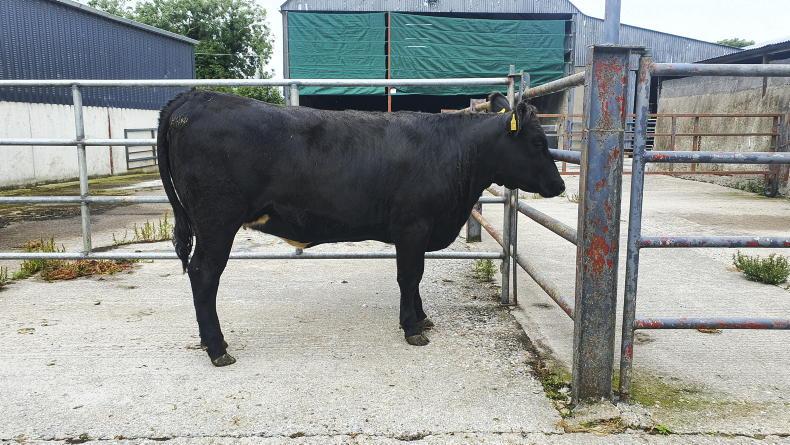





 This is a subscriber-only article
This is a subscriber-only article










SHARING OPTIONS: